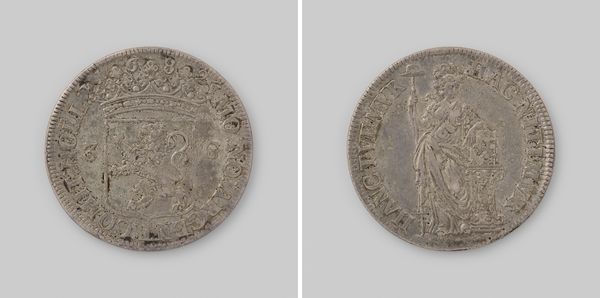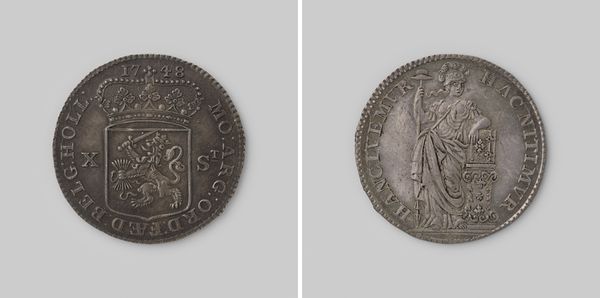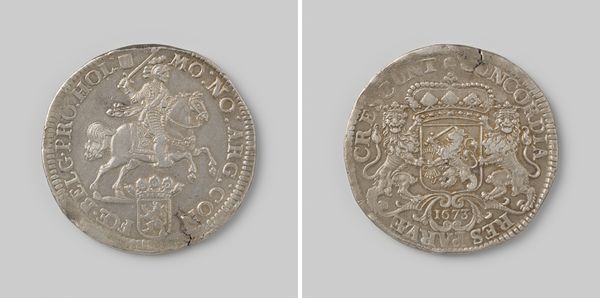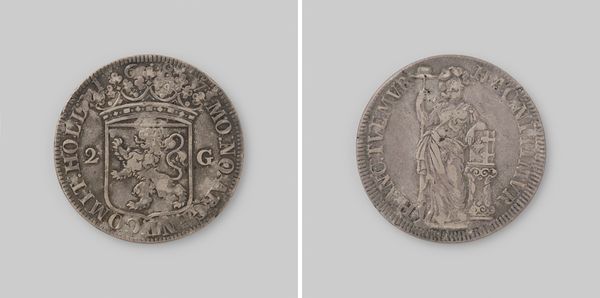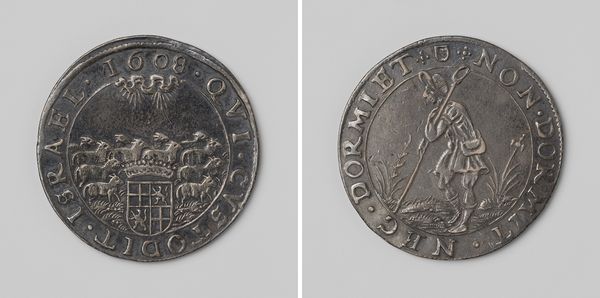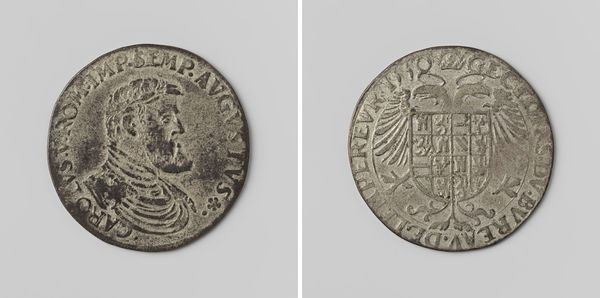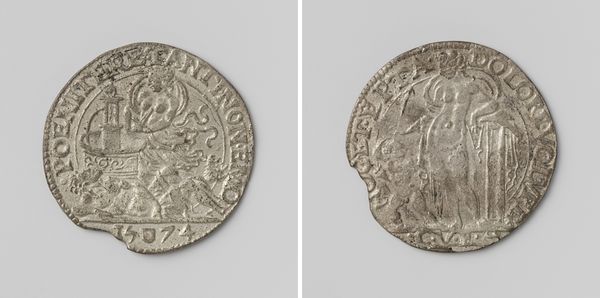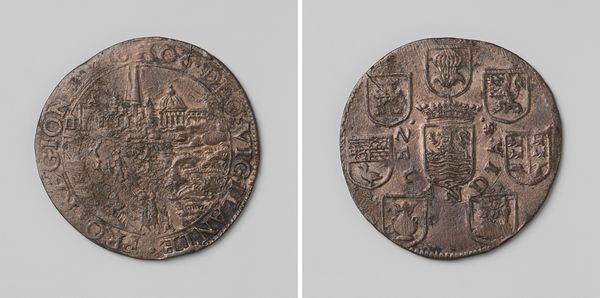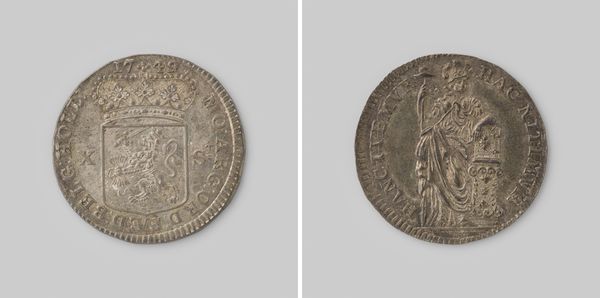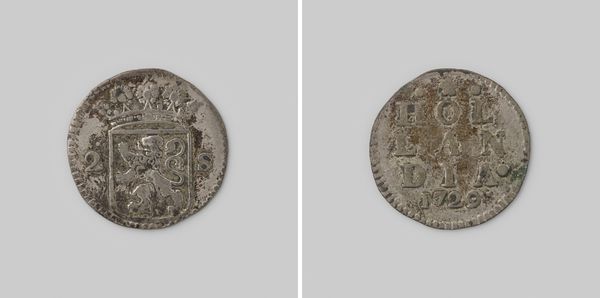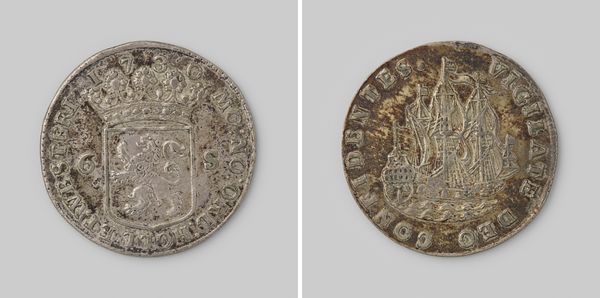
Drie gulden van de Bataafse Republiek op naam van Utrecht, 1795 1795
0:00
0:00
print, metal, relief
#
portrait
# print
#
metal
#
relief
#
ancient-mediterranean
#
history-painting
Dimensions: diameter 4.0 cm, weight 31.63 gr
Copyright: Rijks Museum: Open Domain
Curator: Isn’t it funny how something as small as a coin can tell such big stories? Editor: It feels worn, carrying echoes of past transactions. How would you describe it formally? Curator: This is a "Drie gulden" coin from 1795, minted during the time of the Batavian Republic in Utrecht. Look closely – one side bears the Utrecht coat of arms, crowned. On the other, you see a standing figure of Liberty. It’s made of silver, so it catches the light beautifully. Editor: The composition is fairly typical of the period – a heraldic shield on one face and an allegorical figure on the other, framed by inscriptions. It's essentially a political statement made compact. Curator: Definitely a statement, and a bold one at that! I like thinking about who handled this, what they bought with it. It's not just currency; it’s a relic of revolutionary fervor. It also shows that they tried hard for the style to look very old, like it was from the olden times already, when actually, at the time, it was a super new idea! Editor: Precisely. The coin references classical imagery—that neoclassical liberty figure, for example, nods to ancient republicanism. But there’s an inherent tension there, between revolution and a desire to anchor legitimacy in historical forms. Note how Liberty leans on an altar bearing an axe. The symbols clearly convey her might! Curator: Absolutely. And what about the value itself? Drie gulden—three guilders! Enough to get by for a while, but was it liberation or new limits for them all, truly? Maybe, in owning the coin, they became like this Liberty figure themselves, trapped forever as part of its surface! Editor: A point well taken! Coins exist within a tightly regulated system of representation and exchange. This piece reflects not just value but the complex negotiations around identity and power during the Batavian Republic. It is far more than money; it is like propaganda. Curator: Well, it certainly paid to ponder it all with you! Thank you. Editor: And thank you. It’s enlightening to consider that such a small object contains such rich cultural and political narratives.
Comments
No comments
Be the first to comment and join the conversation on the ultimate creative platform.


